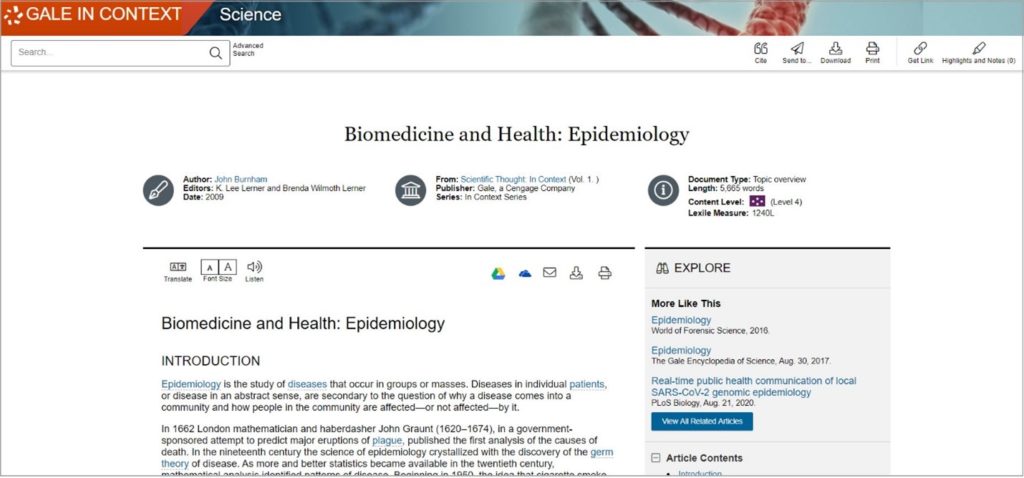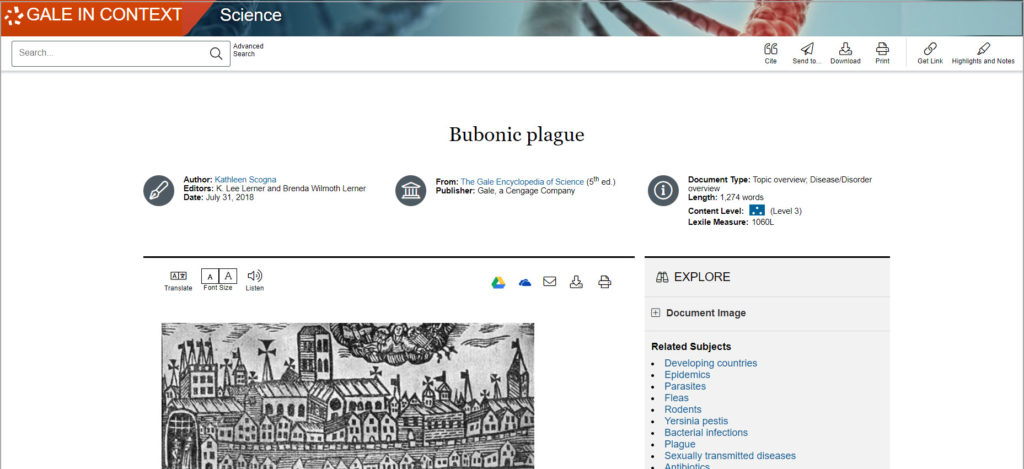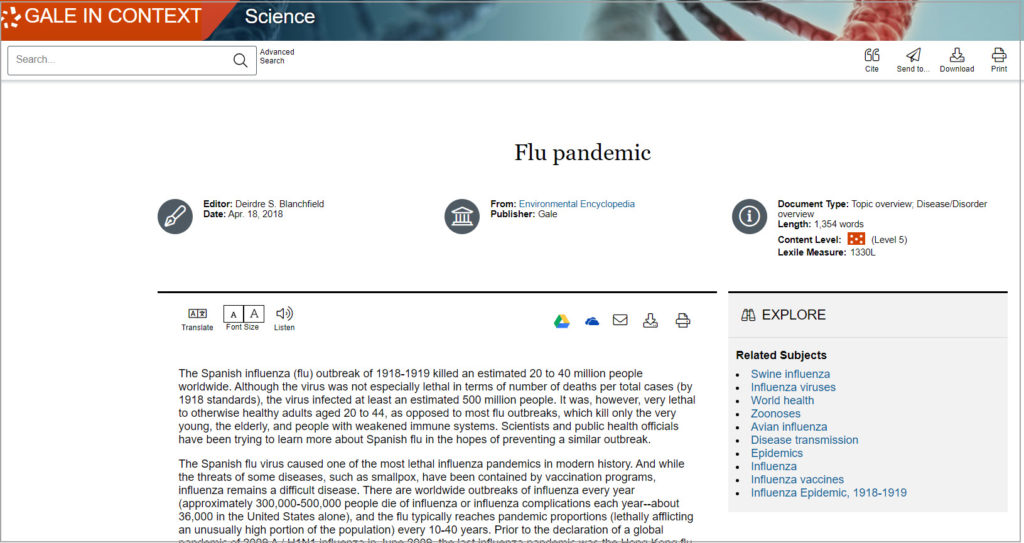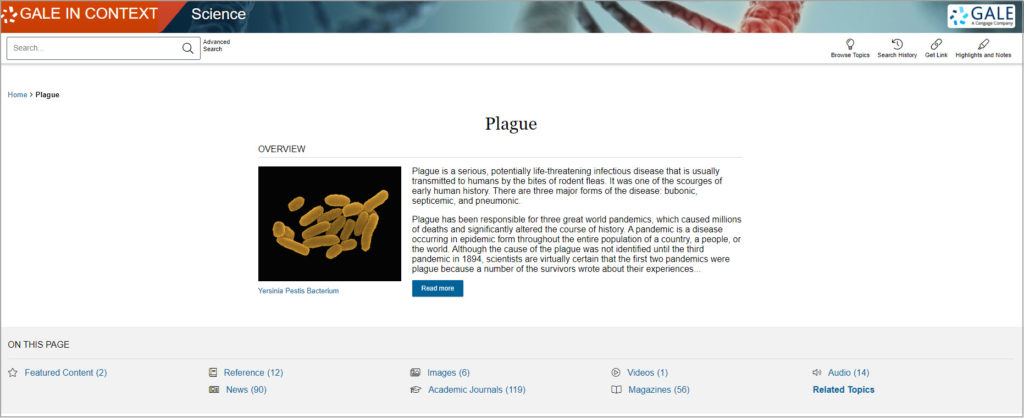| By Tara Atterberry |
My grandmother used to say that there is nothing new under the sun, meaning that whatever humans are going through today has already been experienced in some form or another in the course of human history. While humans have never contracted and spread this novel COVID-19 virus before, plagues, pandemics, and epidemics have been documented around the world for hundreds of years.
Educational institutions have had to learn how to react quickly to protect students and staff from the spread of these diseases for centuries. A review of these historical practices may help guide us as we navigate how to safely and effectively educate students during this COVID-19 pandemic.
Not armed with today’s medical advancements, such as vaccines and antivirals—or even the ability to test individuals for the disease—“one measure that communities instituted to protect themselves against the Black Death and other epidemics was quarantine, and by the eighteenth century, isolating a sick person—a traditional precautionary measure—had become an accepted public health technique.”1 Educational institutions historically have also implemented this simple protective measure as well.

In the 14th century, the Black Death (also known as the bubonic plague) spread quickly across Europe, killing almost half the population of the continent.2 Oxford University in England reacted by sending the majority of their students and staff away from campus, to protect them from the disease and prevent further spread. During the next several centuries, plagues continued to ravage Europe. Institutions of higher education implemented escape plans and became adept at moving students and staff far off into the countryside to protect them from being infected by and spreading these deadly plagues.3

The Spanish flu, which is estimated to have killed 20 to 40 million people worldwide,4 hit the United States in the fall of 1918. Colleges and universities implemented nonmedical practices aimed at preventing the spread of infection. Stanford University required that students and staff wear masks at all times and quarantined those who were sick. Many colleges, such as the University of Montana, held classes outside, while Elon College in North Carolina moved its infected students to the gymnasium, converted into an infirmary to isolate and care for those who had fallen ill.3

A 2009 literature review on school closures proposed that closing schools during the midst of a pandemic may contribute to as much as a 15 percent reduction in cases.5 This is exactly how many urban areas, such as Boston, Denver, Kansas City, Philadelphia, Portland, and many others reacted to the Spanish flu, by closing many K‒12 schools, some for up to 15 weeks in the fall of 1918.5
However, not all large U.S. cities closed schools during the Spanish flu. Two of the United States’ largest cities, New York and Chicago, kept public schools open. “School medical corps were charged with carefully inspecting classrooms and pupils, and sometimes with extending services to homes. Nevertheless, many classrooms in these cities emptied out because of high rates of absenteeism. In Chicago these rates hovered around 30 percent in mid-October 1918 and spiked to nearly 50 percent by the end of the month.”5
Interestingly, while the city of Los Angeles closed K‒12 schools, a revolutionary decision was made to implement a mail-in educational correspondence course, in lieu of in-person instruction. This learning format can be seen as a precursor to today’s e-learning platforms. “The city created mail-in homework modules for high school students so that they could complete assignments at home. In addition, during this ‘enforced vacation,’ teacher courses were set up at the State Normal School, and approximately 1,500 teachers took classes to expand their subject knowledge and pedagogical skills.”5
In today’s COVID-19 world, school closures are still as controversial as they were in 1918 and are, admittedly, not the ideal form of learning for all students. However, we’re now equipped with the technological tools to make learning possible in a virtual environment. One of Gale’s most popular databases, Gale In Context: Science, is one of these electronic resources.
Gale In Context: Science is an engaging electronic resource that provides contextual information on hundreds of today’s most significant science topics. Recently updated to include timely information on the COVID-19 pandemic, Science includes specific topic pages on Plagues and Coronavirus:

Drawing students in with captivating subject matter, Gale In Context: Science showcases how scientific disciplines relate to real-world issues, ranging from bacteria to obesity to weather. Integrating millions of full-text articles that include national and global publications, 200+ science experiments, 300+ interactive simulations, other multimedia, and top reference content, Science is updated daily and offers over 600 pages on topics across the curriculum, covering biology, chemistry, earth and environmental science, physics, and more.
- Burnham, John. “Biomedicine and Health: Epidemiology.” In Scientific Thought: In Context, edited by K. Lee Lerner and Brenda Wilmoth Lerner, 363‒372. In Context Series. Vol. 1. Detroit, MI: Gale, 2009. Gale In Context: Science (accessed September 19, 2020).
- Scogna, Kathleen. “Bubonic plague.” In The Gale Encyclopedia of Science, 5th ed., edited by K. Lee Lerner and Brenda Wilmoth Lerner. Farmington Hills, MI: Gale, 2014. Gale In Context: Science (accessed September 25, 2020).
- Carlton, Dr. Genevieve. “Higher Education and Pandemics: A History of Universities and Viral Outbreaks,” Best Colleges website, April 6, 2020.
- “Flu pandemic.” In Environmental Encyclopedia, edited by Deirdre S. Blanchfield. Detroit, MI: Gale, 2011. Gale In Context: Science (accessed September 19, 2020).
- Stern, Alexandra M., Martin S. Cetron, and Howard Markel. “Closing the Schools:Lessons from the 1918‒19 U.S. Influenza Pandemic,” Health Affairs 28, Supplement 1 (2009).
Banner image: Children ready for school during the 1918 flu epidemic in Florida. State Library and Archives of Florida.

Meet the Author
Tara Atterberry has been with Gale for 25 years and manages biography and genealogy content. She is thrilled to be able to incorporate her genealogy hobby into her professional life. Lately, she has been navigating being home with her two daughters and three cats, all of whom are adjusting well to the new normal.

